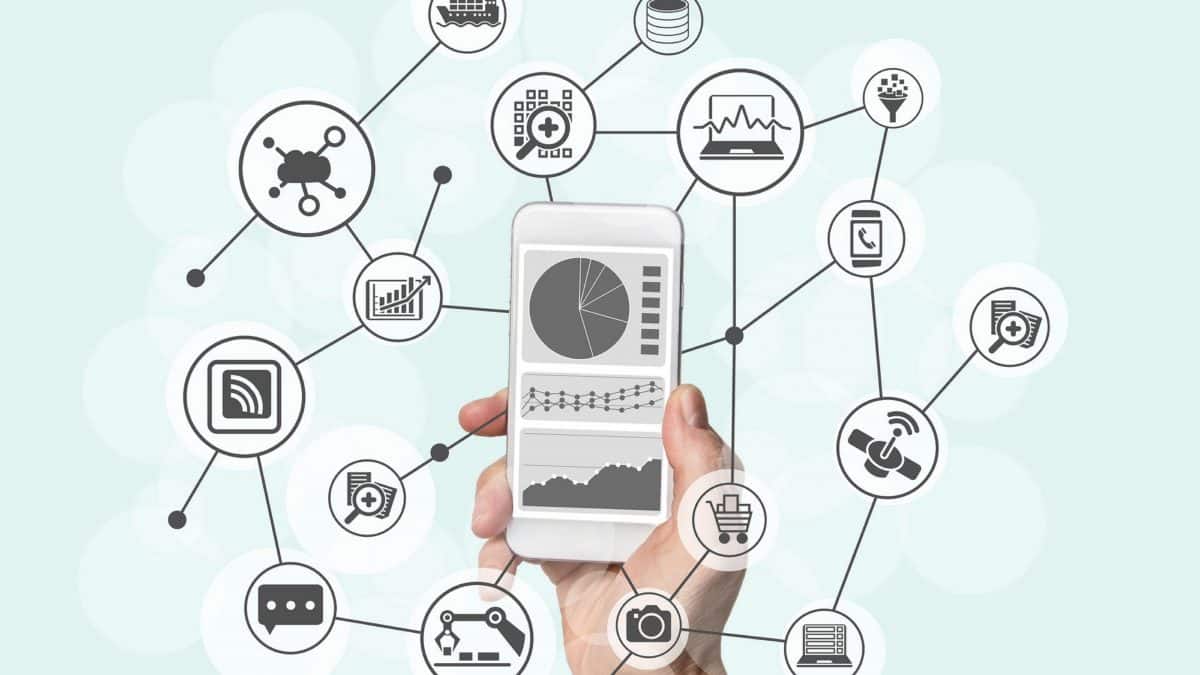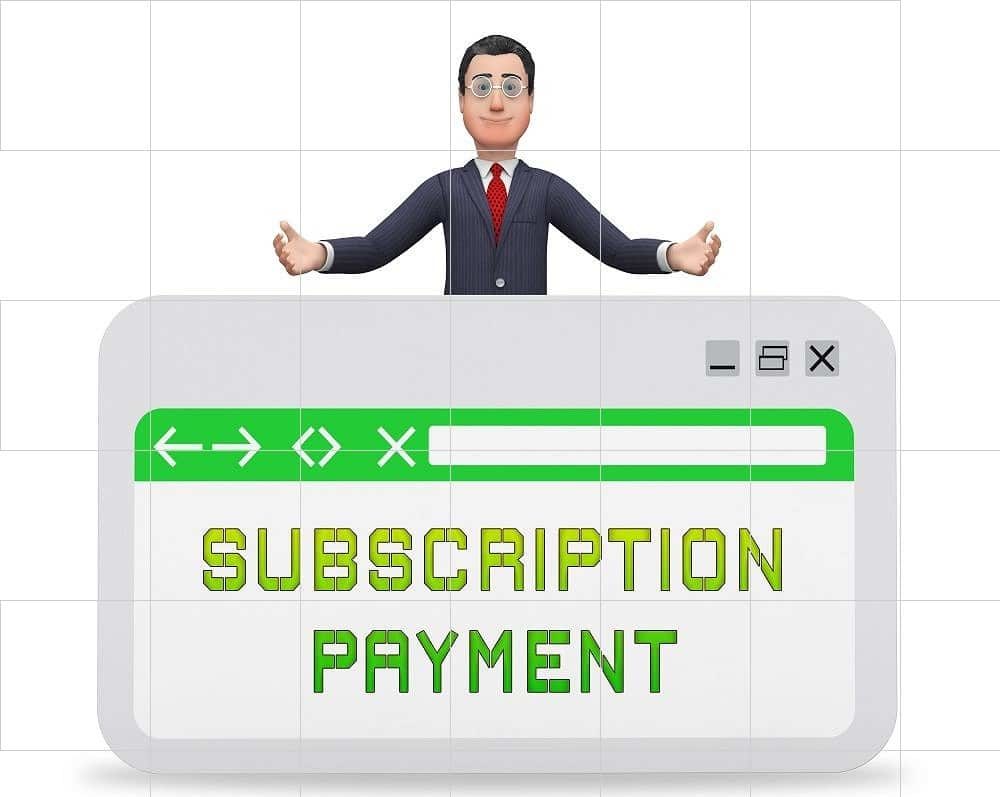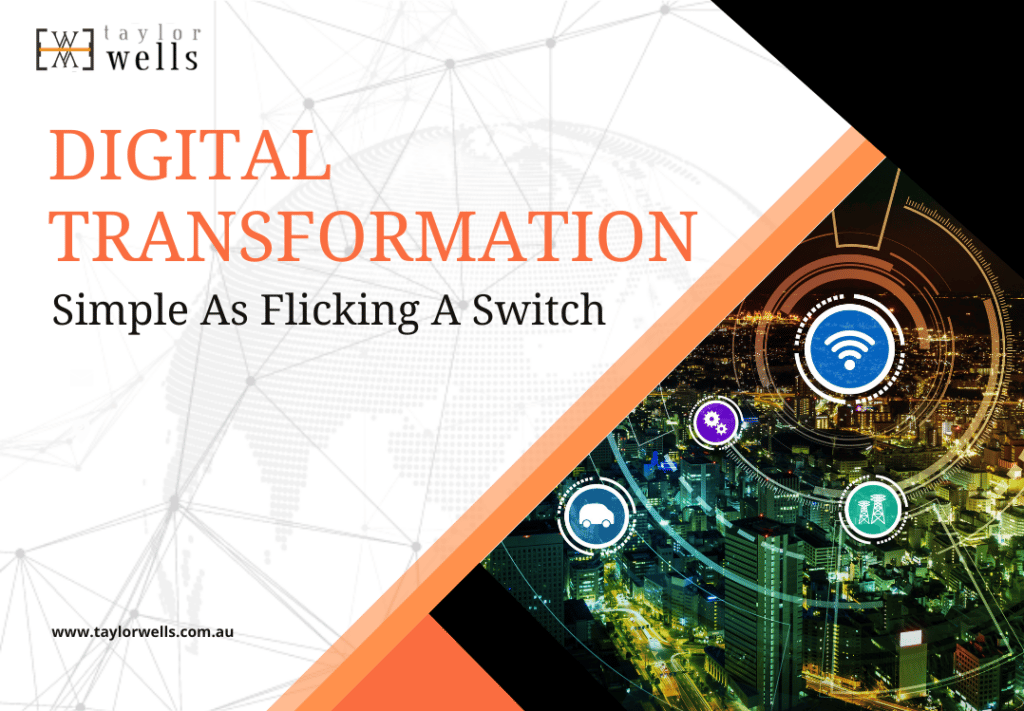
5 Ways To Make B2B Pricing Analytics Generate Immediate Profit Value 💳
Are you using B2B pricing analytics as you should?
>Download Now: Free PDF Digital Transformation
Are you struggling to capture revenue and margin opportunities before your competitors? Do you feel like you’re on the back foot with pricing and need more support?
B2B pricing analytics isn’t likely to identify a whole new way to do business; rather, it will provide insights and opportunities to sell more and do so at more profitable price points.
If you’d like to know how to improveB2B pricing analytics in your business (without all the usual pain and headaches), then this article is for you.
Did you know that it’s been 15 years since “big data” broke into the business wordbook? Seems long, right? But pricing analytics is something new again. Embedded analytics pricing have literally upended long-held assumptions about price and value. This change has elevated, in turn, the critical role of the pricing team and the suite of data analytics pricing tools they use.
In terms of B2B though, it’s only been recent that Australian businesses have really started to appreciate the scale of the benefits data-driven sales and pricing insights can deliver. These include prioritising leads to enhancing existing relationships with customers and calculating variations of prices across an expansive product portfolio to drive and control profitability at an SKU level.
In this article, we will discuss how B2B pricing analytics can work for your business, and how you can use pricing analytics dashboards to get the right pricing strategy to drive up your profit margins.
Table of Contents:
I. Five Lessons B2B Sales Leaders Should Learn to Make B2B Pricing Analytics Work
II. B2B Pricing Strategies: Your Guide to Subscription Pricing

Five Lessons B2B Sales Leaders Should Learn to Make B2B Pricing Analytics Work
Limited experience of B2B businesses in B2B pricing analytics
Not using better B2B pricing analytics puts you at risk of margin loss. The limited experience B2B businesses have with pricing analytics puts them at risk of making some of the same mistakes a large majority of your B2C counterparts have already been through.
Mistakes are as follows:
- going into a price optimisation analytics programme with only a vague sense of your objectives, becoming complacent with a specific technology
- scant knowledge of how to use price optimisation software and data tools
- a series of price strategy execution failures leading to wasted resources and poor results.
Without any extensive knowledge of the pricing analytics tools, your business could end up making costly mistakes and failing to achieve profits for your business using the wrong price data structures and follow up B2B pricing analytics.
Being complacent on specific technology is a mistake. There must be a constant change in using technology to see what really works. Don’t rely on only one system. Always find ways to innovate.
B2B enterprises of all scales are adopting analytical methods used by business-to-consumer (B2C) retailers like Amazon. Businesses like John Deere and Caterpillar are using customer data to predict their margins. Additionally, they are using it to drive more profitable sales and strengthen customer relationships.
Here’s a list of the five crucial lessons to make B2B pricing analytics serve your company’s needs:
1. Focus on clear company objectives
Many times, we’ve seen a lot of sales organisations begin their implementation of price optimisation analytics by asking the tools that they should use. Oftentimes, it’s easy to bring in and use an off-the-shelf solution recommended by a key stakeholder or an operating unit. Well, it does pay off sometimes, but not in the long term.
Businesses should closely examine the business’ needs and what obstacles to overcome. Start an embedded analytics pricing implementation by defining those challenges. Then create internal knowledge through analytical testing price list with the available tools. These analytical testing price list will develop a case for support from top executives. That’s important not only for a budget allotment but also for obtaining an organisation-wide approval to move ahead.
2. Help your pricing team overcome scepticism
To build trust, a resolute approach is needed to overcome a sceptical pricing team. We have identified four vital factors to be successful:
Be transparent
Companies can convince pricing team more to trust the B2B pricing analytics if they educate them on how the algorithm is created and how insights are derived from it.
Get the pricing team involved
It’s important to work with the pricing team to know what they really need. The best analytics teams work with pricing team as partners and analyse pricing solutions — like ways on how to improve their customer relationships, from their viewpoint. In addition, find out the pain points that B2B pricing analytics can solve. For instance, better pricing options or an easy reordering process to help improve customer service.
Have a simple start
Start simple. For example, improved conversion funnel. By doing so, it helps the pricing team become more comfortable with the insights. Thus, understanding how data can guide their decisions.
Be clear about the value
Ultimately, pricing teams want to price accurately. So be clear about how B2B pricing analytics can help them do just that. Remember, the best price analysis and data tools can give the pricing team and the top management a window. For instance, into individual performance against targets, identify the performance gaps and determine certain opportunities to close those gaps. At the same time providing definite pricing recommendations.
3. Ensure it’s easy to use and understand
Develop tools that are easy to use, that can deliver data or information that’s also easy to understand. And that provides insights or recommendations that are not difficult to work on.
Ensure that the data you want to make available can be easily accessed and understood by both the pricing team and managers. For instance, the insights generated by analytics should be incorporated into the tools the pricing team is presently using (as no one wants to learn how to use another tool). Pricing analytics dashboards should be easy to understand and clear on recommendations.
4. Start with the data that are easily accessible
It’s really exasperating to combine data to make a perfect data set. This is especially true when an analytics program is trying to run several systems that normally don’t communicate with each other. This is the reason why a lot of analytics efforts fail because of the delays as they attempt to make a perfect data set.
Believe it or not, successful programs start with the data accessible in one system or in systems already communicating well with one another.
5. Set up a team mentality
If you want to build a successful analytics program, you should remove the prevailing silos of data and analysis. For instance, we normally see that companies can restructure their pricing approach. But only after they break down cross-functional obstacles between marketing, sales, and their pricing teams. Basically, each team has its own systems, tools and sources of data, thus creating several blind spots. To defeat this, functions should create an integrated team to share insights and improve B2B pricing analytics.
Implications
Usually, companies find that throughout the process, dealing with the overall mindset and working style of the people involved is vital to success. That involves providing real-time feedback and creating incentives that reward the use of data.
To quantify success by the team’s improvement and progress instead of by individual function helps bond the team.
Creating the perfect data set can be time-consuming and frustrating. Thus, successful programs should start with the data that are easily accessible in one system; or in systems that are already integrating well with each other.
〉〉〉 Get Your FREE Pricing Audit 〉〉〉
Conclusion
For a B2B to be successful in the pricing analytics, they should bear in mind that data-driven growth comes from more than just being good at data.
B2B companies are slow to accept all that big data can provide. That is because they’re not clear about the possibilities or are intimidated by its complications. However, the rivals that are ready to move are allowing their pricing team with data and insights that will translate to the bottom line.
When your pricing strategy is not working out because of data integration problems or skills shortages, give us a call and we’ll assess on improving your company’s B2B pricing strategy. Don’t miss out on this opportunity.
Click here to access your free pdf guide on driving pricing strategy in your business.

B2B Pricing Strategies: Your Guide to Subscription Pricing
B2B businesses in Australia are now implementing B2B pricing strategies using subscription models. Consequently, many firms are phasing out legacy, cost-based pricing models with new value-based subscription models.
For example, B2B businesses such as Hilti, John Deere, Rolls Royce, Michelin have all launched new subscription pricing as their B2B pricing strategies in the Australian market to capture more profit and shareholder value.
Likewise, IBM, Philips and Rockwell Automation have successfully launched a range of profit-driving subscription models for their SaaS portfolios to give customers exactly what they want; when they want it.
We ask: Is B2B subscription pricing a passing fad or a leading revenue pricing strategy?
To answer this question, in this article, we’ll continue discussing B2B pricing strategies: i.e., what’s a subscription pricing, real-world B2B case studies, and the three most popular subscription pricing models used in B2B industries today.
We assert that the primary factor driving a subscription economy is a low risk, high-value offer focusing heavily on customer needs and usage patterns.
By the end of this article, you’ll know why and how to build a value-based subscription pricing model to drive more revenue, margin and shareholder value.
What is value-based subscription pricing?
Value-based subscription pricing is a financial model that captures price premiums derived from customer value drivers – i.e., different ways customers value a product or service – to generate profitable revenue growth for the business and its customers.
Typically, value-based subscription models range from ‘try before you buy’ freemium model or ‘use-as-you-need’ model (low upfront costs).
Real-world B2B case studies of B2B subscription pricing
John Deere
Deere & Company is the first example of a traditional B2B business using the latest subscription pricing. John Deere is a global B2B business that manufactures agricultural, construction, and forestry machinery, diesel engines, drivetrains used in heavy equipment.
They offer a sophisticated range of subscription pricing models for their wide range of machinery and services solutions. JDLink™ Ultimate, for example, is one of their latest B2B subscription pricing models. In this model, they offer customers a comparably inexpensive, smooth data solution that maximises uptime and increases productivity.
Additionally, they are consolidating JDLink Ultimate Forestry with the larger JDLink offering. Moreover, the Wireless-Data-Transfer and Limited Internet features provided in the Forestry Ultimate subscription will be incorporated with all Ultimate and Ultimate Dual subscriptions, the company says. The said change will apply to both existing Forestry machines including new machine orders.
Ana-Maria Mallia, product marketing manager, said:
“Machine connectivity is key for our customers, who rely on this technology to maximize productivity and uptime. When we first rolled out our JDLink offering, we were excited to bring an innovative solution to the market that connected our customers with their machines and dealers. We want to make it even easier for our customers to stay connected, and to do so, we are reducing prices to make this solution even more affordable and consolidating our subscription structure.”
In April of 2019, John Deere decreased its annual subscription for JDLink Ultimate to $200.00, and the JDLink Ultimate dual subscription to $630.00. They also eliminated tiered pricing, allowing customers to purchase up to three years of a subscription.
Caterpillar
Caterpillar Inc. is another world-leading example of B2B subscription pricing. It designs, develops, engineers, manufactures, markets, and sells machinery, engines, financial products, and insurance to customers via a worldwide dealer network. Caterpillar now has the biggest connected industrial fleet globally, integrating more than 500,000 machines.
Caterpillar has done with pricing, what many B2B manufacturing have not done before; namely using real-time data, sourced from their own software solutions, to build new B2B subscription pricing models for their customers.
A notably customer-focused B2B subscription pricing model from Caterpillar is CAT Connect. Cat Connect Solutions are a new structure for construction technologies and services. Utilising the data gathered from hi-tech machines, customers obtain more information and gain insight into the performance and the equipment itself than ever before. Its aim is to help customers track, manage and improve operations and have more control of the worksite.
Cat Connect Solutions enable customers to choose the technologies and services that best suit their needs and to achieve jobsite requirements and provide business results. For businesses, Cat Solutions’ pricing subscription models lower customers’ total cost of ownership while increasing efficiency. In turn, driving more revenue for customers.
Another goal of Cat Connect Solutions is to easily understand and apply technology and the benefits it provides. Oftentimes, amplifying the use of Cat Connect Solutions only needs the inclusion of proprietary software. In some cases, sensors or electronic components that are easily installed.
Finally, Cat Connect Solutions comprise of 5 solution sets that work together to maximise machine utilization and uptime, increase productivity and improve safety. These are:
- Equipment Management
- Productivity
- Safety
- Sustainability
- Command
How to translate value in your subscription pricing?
To build a good value-based subscription model like Caterpillar and John Deere takes focus on what really matters: Customers. In essence, they have built their B2B subscription pricing by aligning their subscription pricing to what customers value about their products and services and how customers like to buy from them. Everything else is eliminated to keep pricing simple.
Remember, customers using subscription pricing don’t want to be billed for things that they don’t need. Likewise, B2B customers tend to be cautious, sceptical buyers or even risk-averse buyers who want to buy high value offers with minimal risks and no delays.
Therefore, a large aspect of customer value in B2B segments boils down to knowing exactly what your customers value and then carefully identifying key customer value drivers by customer group, price group and product.
Examples of customer value drivers are as follows:
- Ease of use
- Pay per use
- Convenience
- Supply chain risk/ distribution capability
- Performance and functionality
- Personalized services
- The ability to change/upgrade their subscription
Three B2B Subscription Pricing Strategies
To ensure your pricing models successfully improve profitable revenue growth, consider implementing one of the latest pricing revenue models below.
- Tiered Pricing Model – This model measures the buyer’s consumption of primary service features of a product/service. Buyers that take advantage of this model have the understanding that price per unit reduces with the commitment to pay for the use of more features.
- Fixed Price Model – Fixed price subscriptions are easy to quantify and bill. However, the downside is that you are not able to charge customers incrementally as they consume more of a specific feature that may be willing to pay more.
- Consumption Pricing Model – This type of pricing model is also called “metered billing”. It counts the number of units a user consumes. The subscriber will be billed periodically based on a predefined bill price.
The benefits of B2B Subscription Pricing
- Aside from offering convenience and excellent service for your customers, B2B subscription models can help your business stand apart. From the data collected from the subscription service, you can analyse the data and learn more about your customer’s business. Consequently, allowing you to anticipate their needs and provide them with personalised offers. Most of all an overall best customer experience.
- B2B subscription service can strengthen your market position, your customers’ long-term loyalty, and your brand.
- It has lower operating expenses. If a company has a strong cash flow, then it can weather the first few years where it’s not making a lot of profits. When the business reaches its break-even point, it’ll be in a much stronger position to withstand.
- It is a great way to generate recurring revenue streams. There’s also a potential for bigger profits over time with subscription pricing through price optimisation and product innovation.
- It makes it easier to cross-sell and upgrade customers to high-value offers. Thus, making the meeting of client needs easier, quicker and more performance-centred.
Discussion
As mentioned, value is deeply connected to the customer. This means understanding what’s valuable to your customers and what’s not and what’s nice to have but not a premium. From here, it’s possible to build a pricing model with the right price metrics.
Essentially, to create subscription packages that generate ongoing value, firms have to match the right product features at the right rates to the right customer groups.
However, changing business models does not happen in a vacuum. Therefore, changing to subscription pricing will have an impact on other aspects of your business. But the great way to manage these changes and reduce disruption is to have a world-class pricing team inform and deliver a well-thought-out and well-planned B2B pricing strategies.
Some tips on how pricing teams can carry out your B2B pricing strategies are:
- Firstly, they can plan how your model will work and then build it. To do this, they will collect the right data, build templates and draft models. They will also collaborate with other business executives to find key information sources. However, they will do all of this with the customer in mind to ensure they build a subscription model that is something that customers are excited about and will use.
- Next step, they will develop the systems to handle and track the new business.
- Lastly, they will test these new models and systems like crazy, ensuring, in turn, a successful launch and implementation.
- Then after everything is live, they will closely monitor and tweak as necessary, otherwise known as optimise to drive ongoing results and ongoing EBIT growth (c. 10 – 15% each year).
Implications
- Subscription pricing when implemented correctly, provides recurring monthly profit and improves the customer experience of the business right at the tricky point of sale.
- Pricing using subscription model requires the business adapts to a subscription pricing mindset. Just follow the guidelines above in making a strategic decision. By doing so, you’ll have a seamless, positive transition for your employees, customers, and shareholders.
- Changing business, pricing and distribution models is not easy. However, to better handle these changes and reduce the disruption of your operations, it is best to plan your B2B pricing strategies strategically and methodically.
〉〉〉 Get Your FREE Pricing Audit 〉〉〉
Conclusion
Using one of the three B2B subscription pricing models (above), your business could see significant and steady growth as well as greater profits and customer lifetime values. However, to guarantee steady and recurring profitable revenue from subscription pricing, you really want to understand, evaluate and adjust your pricing models for new purchasing trends, consumption patterns and customer value drivers.
Building your B2B pricing strategies means aligning your pricing to what customers value about your products and services. Also, on how customers like to purchase from you.
Click here to access your free pdf guide on driving pricing strategy in your business.
For a comprehensive view on maximising growth in your company,
Download a complimentary whitepaper on How To Drive Pricing Strategy To Maximise EBIT Growth.
Are you a business in need of help to align your pricing strategy, people and operations to deliver an immediate impact on profit?
If so, please call (+61) 2 9000 1115.
You can also email us at team@taylorwells.com.au if you have any further questions.
Make your pricing world-class!
Related Posts
Leave a Reply Cancel reply
Categories
- marketing strategy (26)
- Organisational Design (14)
- Podcast (114)
- Pricing Capability (87)
- Pricing Career Advice (10)
- Pricing Recruitment (19)
- Pricing Strategy (287)
- Pricing Team Skills (13)
- Pricing Teams & Culture (24)
- Pricing Transformation (47)
- Revenue Model (25)
- Sales Effectiveness (27)
- Talent Management (7)
- Technical Pricing Skills (35)






